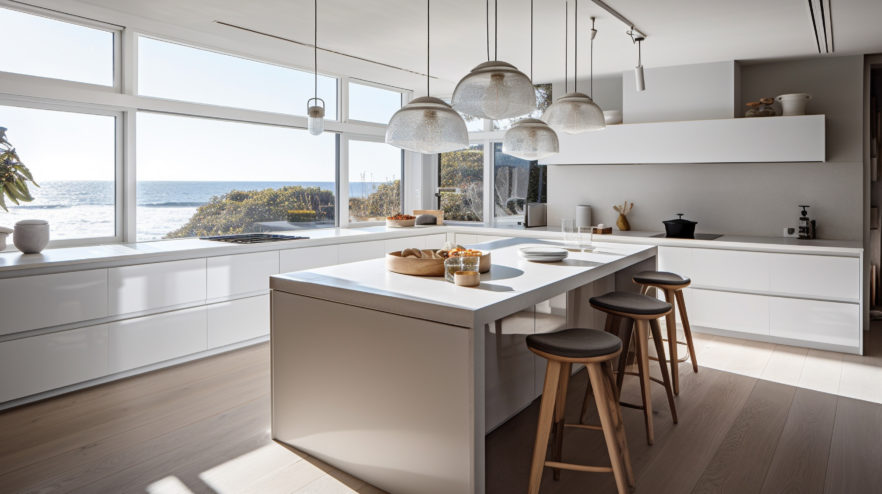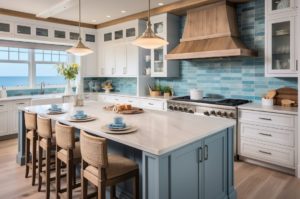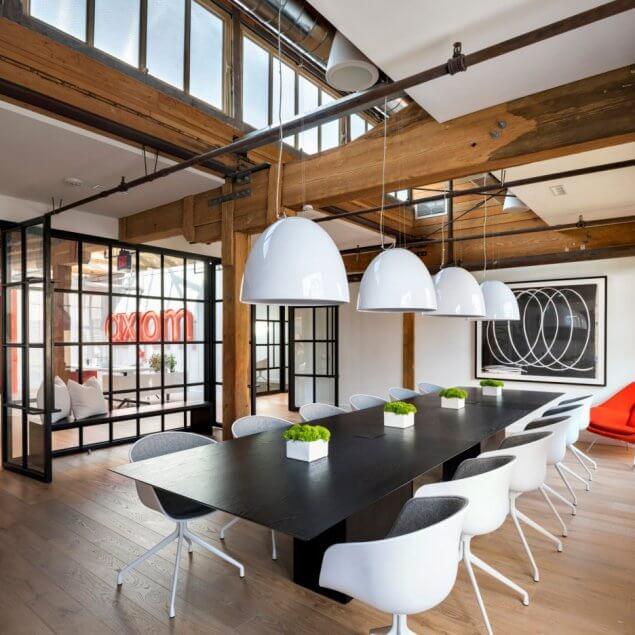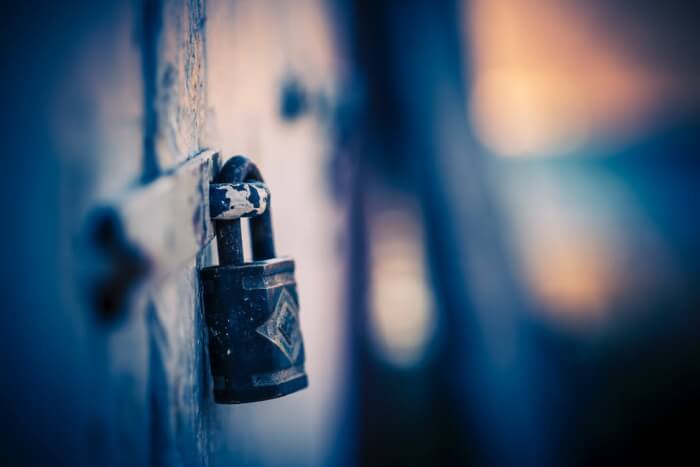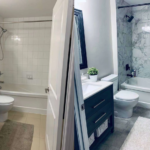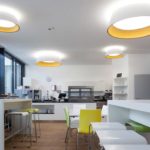Coastal living is a dream for millions of Americans. Although they make up less than a tenth of the contiguous US land area, counties facing the water are home to 40% of Americans. Even if you have no plans of hitting the beach anytime soon, the vast expanse of water and cool breeze are among the reasons to find coastal living pleasurable.
Even better, these sights and sensations are enjoyable from the comforts of your humble coastal abode. Whether facing glistening seas or pristine lakes, modern coastal home design is all about letting people appreciate nature’s beauty at home. This includes the kitchen, which isn’t a place you’d normally go to for a view of the outdoors.
Of course, you can design and build your kitchen however you want. That said, consider taking advantage of the coastal environment with these suggestions.
Windows facing the coast
While a cost-effective means of lighting and ventilation, windows aren’t typically necessary in kitchen design. Some kitchens elect to go windowless (mainly due to the kitchen’s orientation), but others keep at least one fixed or retractable window above the sink.
However, a kitchen facing the waterfront may want to consider maximizing its view of the coast. One approach involves running a continuous fixed windowpane around the perimeter, allowing kitchen users to admire the rolling waves while whipping up something delicious.
Retractable windows are also an option, but they’re ill-advised above the stove. A window that allows the breeze in can be a fire hazard, as the wind might spread the flames to the rest of the kitchen. The National Kitchen and Bath Association also advises against placing window treatments, like curtains, on windows above the stove.
If you want the kitchen to have an uninterrupted view of the waterfront, one idea is to position the primary workspace on a kitchen island. This setup also provides more space for perimeter countertops and cabinetry.
Hamptons-style design
Speaking of cabinetry, what better way to highlight coastal living than a Hamptons kitchen? The theme dates back to America’s colonial years when the first settlers on the East Coast built such homes, owing to the local climate and limited materials at the time. Today, these simple designs are associated with sophistication and timelessness.
A Hamptons-style kitchen is ideal for people who can’t be bothered to choose color combinations. It’s only concerned with one color: white. Splash this color (or shade if you want to be technical) on cabinetry, countertops, drawers, chairs, and workspaces, and it’ll look classy everywhere. The only exception is the floor, which can benefit from wood-like flooring.
Cramped kitchens benefit from a mostly white color scheme, as white makes a room look more spacious. This is because white reflects all colors in the spectrum. Of course, nothing short of a major renovation can enlarge a kitchen.
It’s important to note that having an all-white Hamptons kitchen isn’t an absolute rule. You can find plenty of designs that spruce up Hamptons-style kitchen designs with a variety of colors and shades, such as blue, gray, and green. You’d be amazed at what a quick Google search can find.
Sticking with the coastal theme
Whether or not you fancy the beach, it won’t hurt to take a stroll once in a while to find further inspiration for your coastal kitchen. This doesn’t mean picking up anything washed ashore, like pieces of driftwood or a rusty anchor, and placing them in the kitchen.
To start with, have you noticed that most coastal kitchen designs have wood-like flooring? For some design experts, this kind of flooring is designed to emulate the theme of walking on sand. From there, you can build your preferred color scheme should you desire a kitchen to sport more than just classic white.
You might have reservations about using wood flooring for an area prone to spills, and they’re understandable. Wood isn’t exactly good at repelling liquids compared to ceramic and vinyl, but that doesn’t mean they’re unusable. Design experts recommend hardwood floors as the bare minimum; if the budget permits, go for engineered wood flooring.
For a more rustic charm, try adding weathered wood to accentuate the cabinetry. Despite the name, weathered wood isn’t wood that has seen better days but treated to appear like so. To achieve this effect, you can use reclaimed wood.
Avoiding kitchen clutter
It is easy to get carried away when designing any part of a house worth investing in. The kitchen is vulnerable to visual clutter that can take away one’s attention from the essence of the kitchen itself. This is often visible in insufficient cabinet space, prompting seldom-used kitchen items to stay on the countertop and become distractions.
You don’t want clutter to ruin your coastal kitchen, especially not when it draws your attention from the view of the coast. Experts recommend designing storage for as many appliances and equipment as possible and only keep frequently used ones at arm’s reach. Cabinetry will be your best friend here.
Conclusion
Kitchen design for coastal homes more or less follows the same ideas as a general kitchen design. In this case, homeowners have the coast to draw inspiration from and make kitchen duties less daunting. It also won’t hurt to ask a professional for additional insights.
